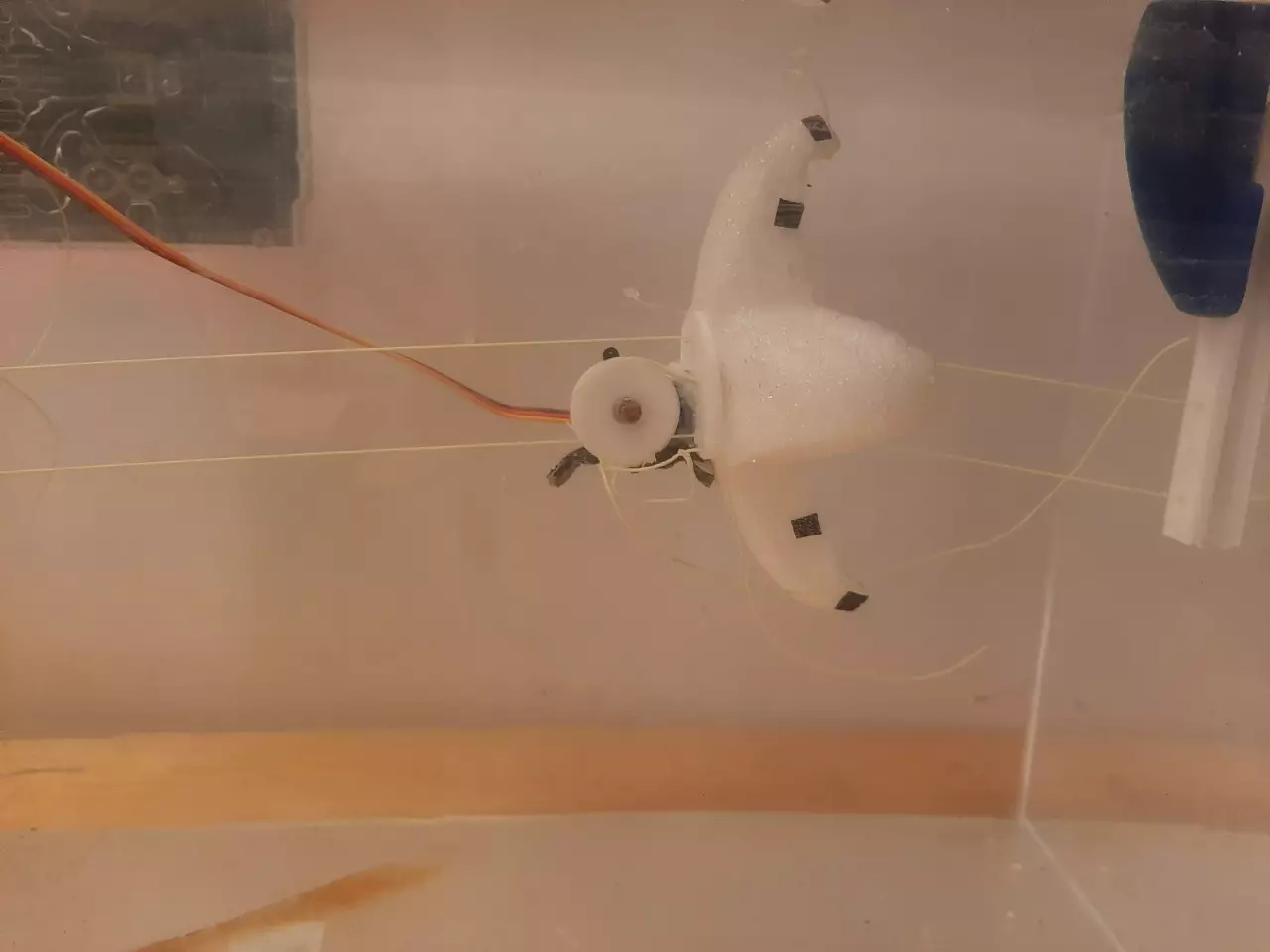When studying underwater marine life, it helps if you can use a device that doesn't scare the animals by appearing unnatural to them. MIT scientists have created a robo-starfish with that in mind, utilizing a new rapid development system.
Due to variables such as currents, salinity and buoyancy, designing underwater robots is typically much more challenging than designing their land-going counterparts. As a result, it's not uncommon to have to go through numerous prototypes, each one incorporating features that its immediate predecessor lacked. Not only is this process expensive, but it can also take several weeks or longer to arrive at a finished product.
When a team led by MIT professors Wojciech Matusik and Daniela Rus decided to build a soft-bodied swimming robotic starfish, they created a machine-learning-based simulation system which is intended to greatly accelerate the development process. Based on the scientists' requirements, that system produced a computer model illustrating how such a robot could be constructed, and how it would swim.
Matusik, Rus and colleagues proceeded to rapidly fabricate an initial prototype, based on that model. When that robot was tested in a water tank, its real-world performance data was fed back into the computer model, further optimizing it. Going back and forth in this fashion, the team was able to produce a functional product within a matter of hours, and with only a few prototypes having been made along the way.

The current version of the robo-starfish has a soft silicone body, along with a single low-power motor that is connected to tendons in each of the bot's four legs. By alternately squeezing and releasing those legs, the robot is able to quietly and efficiently swim through the water. And according to the researchers, the computer model provided important design considerations that would likely have been missed by humans.
"With the robot starfish we learned that, in addition to those quite visible leg propulsions they do, there are some subtler high-frequency movements that can give them important momentum," says postdoctoral student Josephine Hughes, who co-authored a paper on the research along with PhD student Tao Du.
The robot could ultimately be powered by an onboard battery, and be equipped with sensors such as cameras for gathering oceanographic data. And it may soon be joined by robotic sea turtles, manta rays and sharks, all of which are planned to be developed via the new simulation system.
The paper was published this week in the journal IEEE Robotics and Automation Letters. You can see the robot in action, in the video below.
Source: MIT





